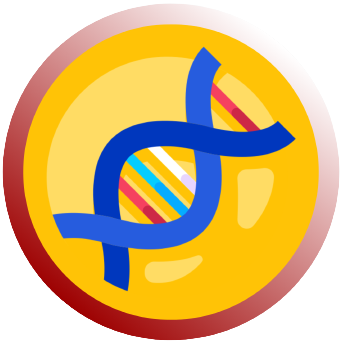Alexia Di Martino—McMaster University Molecular Biology & Genetics 2023
Within our chromosomes, there are billions of nucleotides that are all a part of our genome, the entirety of our DNA. Genomics is the study of the genome. A nucleotide sequence, its precise location, and the gene-gene or gene-protein interactions of specific genes are just a few of the findings that can be discovered through genomics.1 The human body is amazing in its ability to use DNA as a blueprint to direct millions of processes in the body. Of course, our DNA also encodes for the billions of other vital cells – like those of the blood, skin, and brain among other organs – that make up our body on a whole. When cell division goes wrong, though, cells may continue to divide uncontrollably and develop growths that we know as cancer.2
There are two families of genes that influence cancer development. The tumour suppressor gene family has a positive effect on cancerous growth when inactivated or improperly functioning. On the other hand, proto-oncogenes cause cancerous growth when they are mutated and active.3
The Human Genome Project was an advancement in sequencing technology that allowed for a decreased cost of sequencing an organism’s entire genome, as well as improved accuracy of the nucleotides and genes that are sequenced.4 Artificial intelligence and computer algorithms are even further advanced technologies that give researchers the ability to automate pattern-recognition within these sequences. From this, links between a gene’s function in the DNA compared to the patient’s phenotypic presentation of a disease can be made.
Tens of thousands of sequenced genetic mutations have been archived through the amazing work of oncology researchers into genetic libraries. One of these libraries is The Cancer Genome Atlas (TCGA).5 Using a patient’s genome, doctors can refer to these mutated cancer-linked genes to screen patients for susceptibility to a specific cancer.

With the knowledge of the patient’s cancerous tumour’s genome, clinicians can identify the exact mechanisms of the cancer cells that causes their proliferation. By comparing the genome of the same patient’s normally functioning ‘germline’ cells to their cancer, researchers can pinpoint the mutated or defective genes responsible for the cancer. They can then recommend better-informed treatments such as pharmaceutical drugs and antibodies targeting certain molecules or pathways of the tumour cells.7 Targeted treatments are much better overall than uninformed therapies. Radiation therapy or stem cell transplants may not be appropriate or as effective in all cases, and can be very expensive. Understanding the genomics of a patient’s cancer could spare them from unnecessarily high medical bills, and more importantly, could have less harmful effects on their body, leading them to being cancer-free more quickly.8
While genomics-driven cancer treatment has been in practice in this way, recent studies into novel gene-editing practices have shown to be promising for the future. In the CRISPR-Cas9 gene editing system, scientists specially design a guide RNA to target a specific DNA fragment. When this guide RNA binds the gene of interest, it associates with a Cas enzyme that cleaves the DNA at that location.9 Scientists may insert a new gene in that cleavage site or perform other modifications depending on their goal.

Since at least 2017, researchers have been working on using CRISPR-Cas9 on model organisms such as mice and zebrafish in vitro to remove or directly target genes linked to cancer. However, it still poses some challenges when attempting to deliver cancer treatment in vivo.10 These issues are already being studied to create functional and safe delivery of CRISPR-Cas9 gene editing in different tissues in order to accommodate the wide range of cancers seen in patients. As the cancer genome library continues to expand, the CRISPR-Cas9 method of treatment will experience many benefits as well.
The work of biologists in all fields have contributed to this progress – from improved genetic sequencing techniques, to experiments that identify cancer genes, to the assembly of genetic libraries, and everything in between. These advances give every human being a lifesaving advantage in cancer diagnoses. With further research on these gene libraries, scientists will be able to screen the genomes of patients and target cancer-causing genes to inhibit their mechanisms before cancerous cells even get the chance to cause damage.
References
- NIH Staff. A brief guide to genomics [Internet]. Genome.gov. 2020 [cited 2022Jan2]. Available from: https://www.genome.gov/about-genomics/fact-sheets/A-Brief-Guide-to-Genomics
- Williams GH, Stoeber K. The cell cycle and cancer. The Journal of Pathology. 2011Oct12;226(2):352–64.
- Lee EY, Muller WJ. Oncogenes and tumor suppressor genes. Cold Spring Harbor Perspectives in Biology. 2010;2(10).
- Hofstatter EW, Bale AE. The promise and pitfalls of Genomics-Driven Cancer Medicine. AMA Journal of Ethics. 2013;15(8):681–6.
- NCI Staff. The cancer genome atlas program [Internet]. National Cancer Institute. 2019 [cited 2022Jan2]. Available from: https://www.cancer.gov/about-nci/organization/ccg/research/structural-genomics/tcga/history
- BCGSC Staff. Genome sequencing helps prioritize cancer treatment options [Internet]. Genome Sciences Centre. 2020 [cited 2022Jan2]. Available from: https://www.bcgsc.ca/news/genome-sequencing-helps-prioritize-cancer-treatment-options
- Mattick JS, Dziadek MA, Terrill BN, Kaplan W, Spigelman AD, Bowling FG, et al. The impact of genomics on the future of Medicine and Health. Medical Journal of Australia. 2014Jul7;201(1):17–20.
- Welch JS. Use of whole-genome sequencing to diagnose a cryptic fusion oncogene. JAMA. 2011Apr20;305(15):1577–84.
- NCI Staff. How CRISPR is Changing Cancer Research and Treatment [Internet]. National Cancer Institute. 2020 [cited 2022Jan2]. Available from: https://www.cancer.gov/news-events/cancer-currents-blog/2020/crispr-cancer-research-treatment
- Zhang H, Qin C, An C, Zheng X, Wen S, Chen W, et al. Application of the CRISPR/cas9-based gene editing technique in basic research, diagnosis, and therapy of cancer. Molecular Cancer. 2021;20(1).


One reply on “How Modern Genomics has Changed our Approach to Cancer Treatment”
Really interesting how genomics has changed every corner of medicine!
LikeLike